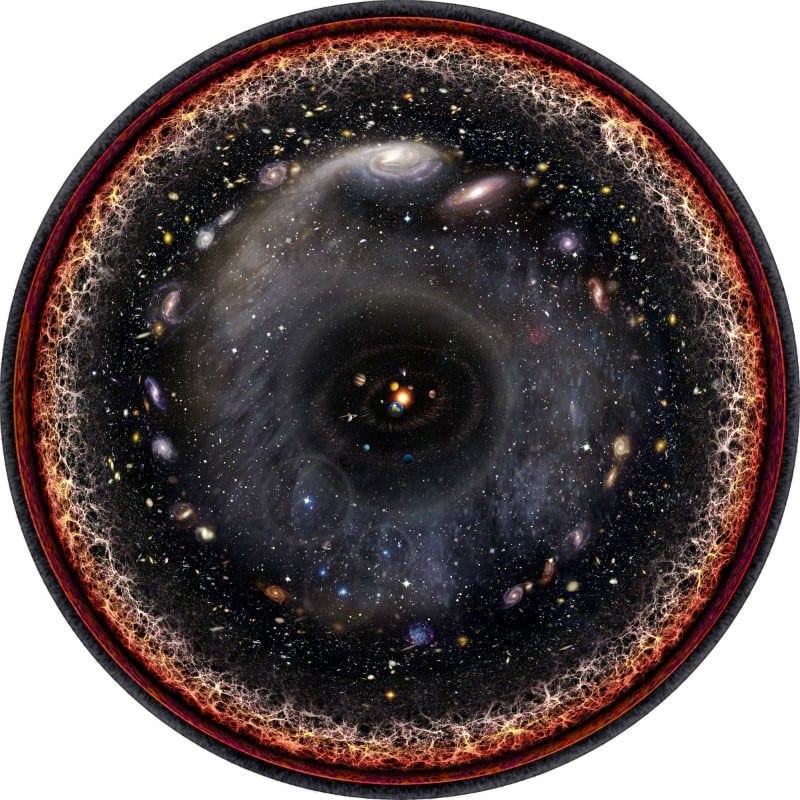Encircling the Solar System are the inner and outer planets, Kuiper belt, Oort cloud, Alpha Centauri star, Perseus Arm, Milky Way galaxy, Andromeda galaxy, other nearby galaxies, the cosmic web, cosmic microwave radiation, and invisible plasma produced by the Big Bang at the outer rim.
The Princeton team, led by astronomers J Richard Gott and Mario Juric, based their logarithmic map of the Universe on data from the Sloan Digital Sky Survey, which over the past 15 years has been using a 2.5-metre, wide-angle optical telescope at Apache Point Observatory in New Mexico to create the most detailed three-dimensional maps of the Universe ever made, including spectra for more than 3 million celestial bodies. Logarithms help us to precise a large amount of numbers. Logarithmic maps are a really handy way of visualising something as inconceivably huge as the observable Universe, because each increase on the axes rises by a factor of 10 (or order of magnitude) rather than by equal increments. The Princeton team published them in the Astrophysical Journal back in 2005. However, you can browse through and download them at https://www.astro.princeton.edu/universe/. Budassi decided to make something a bit more pleasant, as logarithmic maps were not much to look at. Hexaflexagons were reported to have been Budassi’s inspiration for the representations of the Universe and he got the idea of setting the whole universe in one picture after making hexaflexagons at his son’s birthday party. Hexaflexagons are paper polygons with a deceivingly large number of faces. “[W]hen I was drawing hexaflexagons for my son’s birthday souvenirs, I started drawing central views of the cosmos and the Solar System,” Budassi told Tech Insider. “That day the idea of a logarithmic view came, and in the next days I was able to [assemble] it with Photoshop using images from NASA and some textures created [on] my own.” You can head here for a full-sized version of the image by Budassi, and watch below to see a different kind of cosmic visualisation produced by astronomers at the University of Hawaii – this one is of our Milky Way galaxy, in relation to 100,000 neighbouring galaxies:
